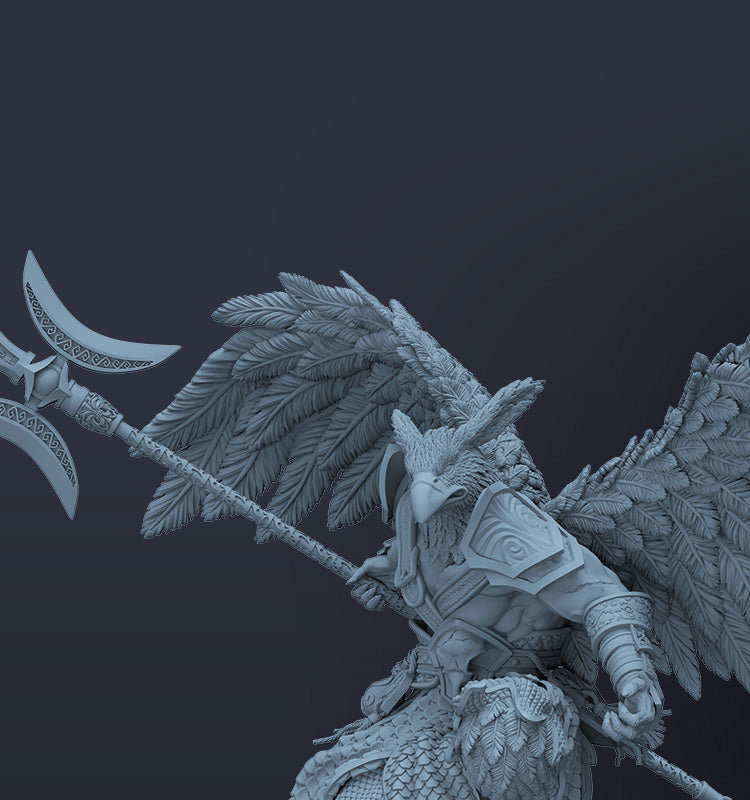Are you looking to break into the world of resin 3D printing? Resin 3D printing can offer up some amazing possibilities and has been steadily growing in popularity. Creating intricate models or prototypes that would have been impossible with other methods is now achievable to even a beginner who takes their time to learn the essential processes.
This blog post will be your guide on your journey, showing you all there's to know about using a resin 3D printer. From the different types of resins and understanding curing times, we'll help make sure you understand everything needed for optimal performance. So, let's dive in!

What is Resin 3D Printer?
Resin 3D Printer technology has revolutionized the 3D printing process. This form of printing requires a few different elements than its traditional counterparts, such as the use of photopolymers and an ultraviolet light source instead of filament and lasers.
This change in fundamental parts has allowed for more detailed prints with high levels of accuracy, ideal for creating artwork, miniatures, molds, and small architectural models. Additionally, due to their advanced technology, Resin 3D Printers are notoriously faster at producing prints than their counterparts, often finishing a job in hours instead of days or even weeks.
For any project that requires intricate detail on a smaller scale with quick turnaround times, Resin 3D printers may be your ideal choice.
How does a Resin 3D Printer Works?
Resin 3D printing works by forming physical objects from a digital model. It does this by selectively curing layers of resin with ultraviolet (UV) light, which hardens the resin and creates the desired object. During the process, the 3D printer's build platform lifts in small increments to make room for new layers of UV-curable resin as they are added, while an IR/LED light source works to cure each layer.
This plastic polymer is applied in thin layers onto the 3D printer platform and then cured using an advanced "LED array" of light sources directed downward. With each layer that is cured in one pass, more detailed plastic structures are formed until the 3D printer has successfully compiled enough passes and built a model that physically reflects its digital design priorities.
Resin 3D printing offers a great way to produce highly accurate parts and prototypes quickly with minimal manual labor involved.
What Types of Resin 3D Printing Are There – How Does it Work?
There are three types of resin 3D printing. Take a look below at their description and their work:
1.SLA
SLA, or Stereolithography, is a unique and highly popular type of Resin 3D Printing. It has revolutionized the 3D printing landscape by providing opportunities for users to produce highly detailed and visually stunning prints. SLA involves the use of ultraviolet light to harden photosensitive resin into different shapes, allowing for more detailed and intricate objects to be produced than other types of 3D printing.
The product produced by SLA resin 3D printing will have excellent dimensional accuracy and strength for its intended application, making it ideal for creating accurate components for a wide range of industries such as engineering, dentistry, medical products, and consumer products.
The product produced by SLA resin 3D printing will have excellent dimensional accuracy and strength for its intended application, making it ideal for creating accurate components for a wide range of industries such as engineering, dentistry, medical products, and consumer products.
2. DLP
Resin 3D printing, also known as Digital Light Processing (DLP) technology, is an additive manufacturing technique that utilizes a powerful light source like an ultra-violet/visible light projector to cure UV-curable photopolymer resin.
This resin is contained within a vat and cured layer-by-layer onto a platform under the influence of the light projected from the projector above. Due to its layer-by-layer approach and lattice support system, DLP printers are able to print micro details with great precision.
On top of this, they are perfect for printing small figures, artworks, and figurines in one go without manual post-processing from assembly or support removal. All in all, it is quickly becoming one of the most popular 3D printing techniques and has opened up new possibilities for applications in different fields, such as education, automotive design, jewelry, and industrial engineering.

Anycubic Photon D2 makes significant progress with the second generation DLP technology, can achieve ultra-high-precision printing, and the DLP projector has a service life of 20,000 hours. There is no need to replace the screen every 2,000 hours like LCD printers, which can save a lot of maintenance costs. The printing size is 131*73*165mm (1.58L), which meets the manufacture of most delicate models and makes it stand out in the DLP competition market.
The reasons for choosing Anycubic Photon D2 are the good printing experience it strives to achieve, the exceptionally high printing quality provided by the printer, and the positive feedback from users. Its price also reflects the high-cost performance.
3. MSLA/LCD
MSLA/LCD is a unique type of resin 3D printing that combines the capabilities of Stereolithography (SLA) and Digital Light Projection (DLP). Its primary benefit is its ability to print significantly faster than conventional SLA while maintaining similar levels of accuracy and resolution. For example, an MSLA/LCD printer can typically run at speeds up to 5-10 times faster than traditional SLA/DLP printers, with resolutions ranging as low as 20 microns.
What makes this type of 3D printing so advantageous is that it performs well with a wide range of materials, making it perfect for a variety of applications in research, manufacturing, and other industries. In short, MSLA/LCD resin 3D printing is a powerful tool for swiftly producing detailed parts efficiently.
Resin Handling for 3D Printing
Resin handling for 3D printing is one of the most important considerations for ensuring quality prints. This is especially true when using stereolithography, as its liquid resin must be treated with great care to prevent premature curing that could lead to unsatisfactory results.
To handle this material properly and guarantee a successful print job, proper techniques such as controlling the speed at which resin is poured and keeping filters clean should be employed. With these practices, you can trust your SLA 3D printer to apply the exact shape of an object onto the surface of the photopolymer container thanks to its UV laser with accuracy and precision.
Conclusion
In conclusion, resin 3D printers are a great choice for those who want to create high-quality prints with intricate details. They can be a little more difficult to use than other types of printers, but the results are worth it. If you're interested in purchasing a resin printer, be sure to do your research first and find one that fits your needs and budget.




